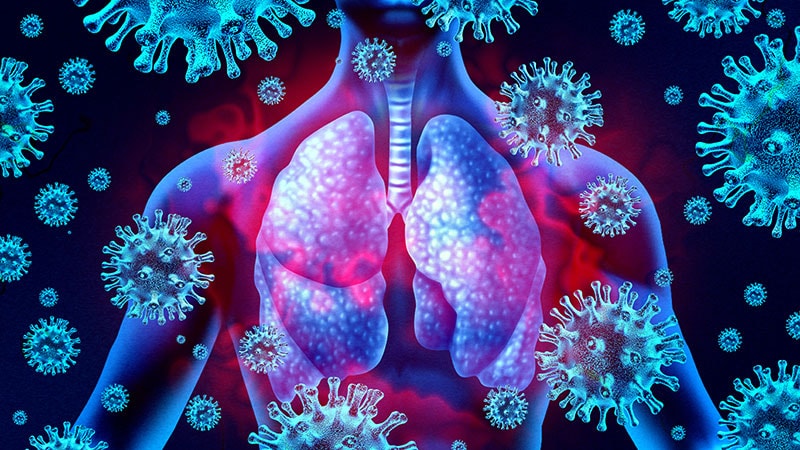- Joined
- Jun 8, 2008
- Messages
- 56,035

Experts: New Bat Coronavirus Being Watched
Expert advocates continued vigilance related to recent announcement of newly discovered coronavirus.
"
Keep New Bat Coronavirus On the Radar, Researchers Say
Heidi SpleteMarch 12, 2025
A newly identified coronavirus in bats has the potential to spill over into humans, said researchers in China, but US experts stated there is no immediate public health risk.
In a study published in the journal, Cell, Jing Chen, PhD, and colleagues at the Wuhan Institute of Virology, Wuhan, China, reported discovery of a new lineage of merbecovirus known as HKU5-CoV-2. The new virus falls into the same family as the merbecovirus that causes Middle Eastern Respiratory Syndrome in humans, the researchers said.
After the findings were published, the Centers for Disease Control and Prevention told ABC News and other outlets that no infections with this virus have been detected in humans, and that there is no reason to presume a threat to public health at this time.
The researchers examined the virus in a lab setting and found that the new virus has the ability to infiltrate human cell lines, which means there is a potential for spillover into humans. More specifically, the researchers found that the new virus could utilize human angiotensin-converting enzyme 2 (ACE2) as a “functional receptor,” and that it is distinctly more able to adapt to human ACE2 than lineage 1 of the same virus (HKU5-CoV lineage 1).
Expert Analysis Reassures
Every time a new virus is discovered in bats, the online chatter immediately jumps to asking whether it is the next pandemic, said Erik Karlsson, PhD, head of the virology unit at the Institut Pasteur du Cambodge, Phnom Penh, Cambodia, in an interview.After the last few years of experience with COVID-19, avian influenza, Ebola, and Marburg, people are on the edge about viruses, and “the idea of another one making the leap to humans isn’t exactly comforting,” said Karlsson, who also serves as the director of the National Influenza Center of Cambodia and WHO H5 Reference Laboratory and coordinator of the WHO Global COVID-19 Referral Laboratory.
“Bats are not out to get us,” Karlsson said. “The reason scientists pay attention to the viruses they carry isn’t because bats are dangerous but because they happen to host a lot of different viruses, some of which, on rare occasions, can jump to humans,” he said.
The majority of viruses found in bats never cause trouble for humans, and Karlsson agrees that the current virus is not a public health threat at this time. However, the new virus warrants monitoring, Karlsson told Medscape Medical News. “HKU5-CoV-2 can bind to human cells. That’s interesting from a research standpoint, but it doesn’t mean the virus is actually infecting humans in the real world,” he said.
Several things have to happen for a virus to go from “we found this in bats [to] this is a public health threat,” Karlsson noted. First, the virus has to infect a human, then it has to spread easily between humans, and then it has to spread at a level that causes concern, Karlsson emphasized. “HKU5-CoV-2 isn’t doing any of that right now; it is just another virus that we scientists are keeping an eye on, similar to what we do with hundreds of other viruses every year in many species,” he said. “Could it mutate in the future? Sure. But the same can be said for many viruses, and most of them never make that leap,” he said.
Karlsson, though not a clinician himself, recognized that news headlines and social media can shape patients’ perspectives and send them to their healthcare providers with concerns. Patients who have heard about the new virus in bats may want to know whether they need to change anything in their daily lives, whether this is another COVID-19 situation, and whether they should worry, Karlsson said. “The answer to all of those questions is no,” he said. “Yes, we need to continue monitoring it and other viruses. No, it’s not something we need to start stockpiling supplies in our panic room over,” he added.
Stay Vigilant and Do What Works
The seasonal flu, and even avian flu, are much bigger and more immediate threats than a bat virus that scientists are simply keeping an eye on, Karlsson told Medscape Medical News. The message to the public continues to be encouraging people to get a flu shot, stay up to date with other recommended vaccines, and practice basic hygiene; all the things known for years, but that people sometimes forget actually work to prevent infection, he said.Looking ahead, “waiting until a virus becomes a crisis is the worst possible strategy, and early detection is everything,” Karlsson noted. “We need to keep the systems we already have running, fund them properly, and build even better ways to detect and respond to potential threats before they spiral out of control,” he emphasized.
“Consistent investment in and maintenance of active surveillance and early detection systems is critical,” Karlsson told Medscape Medical News. “Right now, HKU5-CoV-2 is just an interesting bat virus that scientists are studying that has the ability to bind to human cells in the lab, but with no evidence that it’s infecting people or spreading, but the only reason we even know about it is because researchers are actively looking for these things, not just out of academic curiosity, but because it’s our best shot at staying ahead of the next pandemic,” he said.
“The cost of keeping good surveillance and response systems in place is nothing compared to the cost of another global shutdown,” Karlsson added.
The researchers had no financial conflicts to disclose. Karlsson had no financial conflicts to disclose.
"










300x240.png)